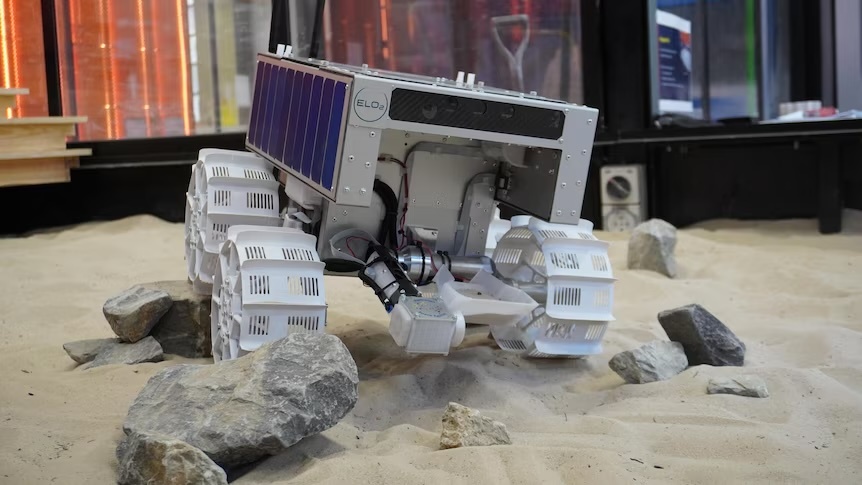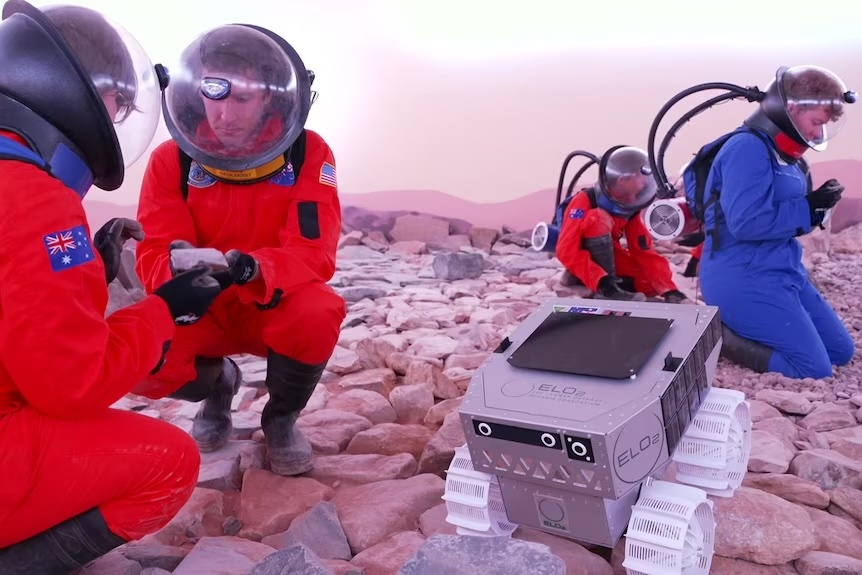25.03.2024

The rover prototype traversed both a lunar and Martian-like surface at Adelaide's Hamilton Space School as part of its testing phase.()
A rover prototype designed to collect oxygen and metals from the moon has been unveiled in Adelaide as part of the Australian Rover Challenge.
It is hoped the Australian-built lunar rover, to be called Roo-ver, will eventually collect and transport lunar soil to a NASA-run facility on the moon, where resources will be extracted to help astronauts breathe on the moon and create rocket fuel to travel back to earth or through the solar system.
"It will be a semi-autonomous rover that will drive around the lunar south pole looking for regolith of interest, which is lunar soil, it will then collect that regolith and bring it back to the lander where NASA will have a processing unit that will extract oxygen and other metals out of the regolith," technical director Joseph Kenrick said.
The rover was created over nine months, with plans to send a real version to the moon later this decade.
The designers said "Roo-ver" showcased Australia's expertise in mining and robotics in extreme environments.
"It's the first full-scale resource extraction mission on the moon, and it's a great stepping stone into unlocking the infinite resources and energy of space," Mr Kenrick said.
Mechanical engineer Chloe Chang said it was an important time in space science.
"It's a really exciting time with NASA going back to the moon and Mars in this generation, which is not something that comes around every decade," Ms Chang said.
She said the rover's mission was to help create a "sustainable ecosystem" that was "economically viable" for moon and space travel.
"Setting up that robotic workforce on the moon that can set up the lunar base for the astronauts [and] collect resources, so we don't have to be bringing our own water and our own oxygen up there... because obviously the more weight you want to put into those rockets the more fuel you need [and] the more expensive it is," Ms Chang said.
As part of the unveiling of the prototype, students from Hamilton Secondary College suited up in astronaut gear to watch the 20 kilogram robot traverse the rocky terrain of a simulated crater.
Assistant principal Dr Sarah Baker said the school's space academy program enabled students to explore space-based careers, with events like the Australian Rover Challenge an important opportunity for students to see real-life space technology and innovation.
"We were so proud, it links to our programs but also showcases the fact that Australia is involved in an international program - we're working with NASA to send a rover to the moon, it's amazing," Dr Baker said.

Students from Adelaide's Hamilton Space School took part in the Australian Rover Challenge.(Supplied)
She said a number of the school's students had aspirations of becoming astronauts and that she would "love" to see them travel to space.
"I'm looking forward to one day seeing them on the moon or on Mars or building technology to get there and survive."
The rover prototype will be tested at facilities across the country over the next few months to help inform the final design.
Quelle: ABC News

